We greatly hope that each of you will be thoroughly tantalized by, and hopefully educated about, these choices of 5 Magnificent Brazilian Mammals. It was certainly our very great pleasure to compile the relevant information for you, our readers, to benefit from.
Naturally, these few species represented here account for only the barest fraction of the mammalian species to be found in this region. While mammals appear across virtually all portions of the globe, in this region they abound. So, enjoy the read!
Margay
Margay Facts
- Leading off this article about 5 Magnificent Brazilian Mammals is the breathtaking wild cat known to some by the simple name of the Margay.
- Perhaps most notably, the short term for the animal serves as the generally accepted common name of a truly stunning species of wildcat. The magnificent feline also goes by the hard to pronounce scientific name of the Leopardus wiedii, however.
- Regardless of the name one uses to refer to it, though, the creature remains an impressive animal, for many reasons. To begin with, this remarkable feline also remains a predominantly nocturnal animal within most of its territory.
- The species also typically prefers to spend the majority of its time in extremely remote sections within its native range. As a result this stunning marvel of Nature remains rarely seen by casual visitors to the region in which it appears.
- Currently, the IUCN lists the marvelous Margay as Near Threatened. Sadly, this unfortunate evaluation of its situation holds true throughout the entirety of its natural range. This status is reflected on the organization’s Red List of Threatened Species.
- The highly lamentable situation the beautiful small wildcat finds itself in further occurs due to a combination of several factors. Firstly, in some regions, people still slaughter an average of 14,000 of these beautiful wildcats annually for the fur.
- Quite understandably, this regrettable action has resulted in an extreme decrease in its population base. Secondly, the twin perils of habitat loss and climate change continue to present extreme challenges to the reclusive small mammal.
Margay Physical Description
Although it certainly qualifies as an impressive animal, the amazing Margay does not attain this status due to physical size. That’s because the feline only attains a small size in terms of sheer mass. In fact, it reaches a maximum known weight of as much as 8.8 lb (4 kg).
The body length of mature adult specimens further averages about 31 in (79 cm). The tail, meanwhile, somewhat surprisingly grows to a length equal to a significant percentage of the length of the body. This generally measures 20 in (51 cm) in length.
Its fur also displays a distinctive pattern. This consists of a light brown that appears splotched with dark brown or black blotches and streaks. In the meantime, the stomach of this creature generally displays an off-white, and the tail has multiple bands, with a black tip.
Perhaps the most distinctive feature of the Margay remains the fact that it has a remarkable evolutionary adaptation in its ankles. These evolved to be so flexible that the cats can actually walk down a tree trunk headfirst. It’s one of only two known to possess this ability.
- Kingdom: Animalia
- Phylum: Chordata
- Class: Mammalia
- Order: Carnivora
- Family: Felidae
- Genus: Leopardus
- Species: L. wiedii
Margay Distribution, Habitat, and Ecology
Quite unfortunately, the gorgeous animal known as the Margay only inhabits a relatively small section of the world. This holds true because of the fact that it only appears in a limited area composed of sections of North America, Central America, and South America.
However, evidence also indicates that this beautiful creature once ranged as far north as the states of Georgia and Florida, in the United States. Even within this range of habitation, though, amazing the creature has very specific preferences for its choice of habitat.
That’s true, first, since this truly amazing wildcat lives almost exclusively in areas of dense forest. Second, though, this includes such typical habitats as the numerous prominent tropical dry forests, evergreen forests, and cloud forests, sometimes known as fog forest.
The beautiful and truly remarkable Margay also evolved to be principally arboreal in its base nature, quite amazingly. In point of fact, and incredibly, the great majority of individuals often spend their entire lives within the canopy, never coming down.
Finally, the tantalizing wildcat also occasionally establishes its territory in a somewhat hard to believe location. To the amazement of many people, this consists of commercial plantations. Unfortunately, this only further increases its vulnerability to hunting.
Southern Tamandua
Southern Tamandua Facts
- Next up among our choices for inclusion in this compendium of 5 Magnificent Brazilian Mammals comes the animal known as the Southern Tamandua.
- Individuals who know of this fascinating creature most often refer to it by this particular choice of common name. Yet the animal also has several other, less often used, names. These terms include that of the lesser anteater and the collared anteater.
- Among professional researchers, however, the remarkable mammal goes by yet another term, its scientific name. That, though, remains somewhat hard to pronounce. That’s because the official name for the animal is a rather tongue-twisting term.
- Regardless of whether one refers to it by the technical name of Tamandua tetradactyla, or one of the common terms, though, one fact remains paramount. That’s the undeniable fact that, to those who appreciate Nature, it’s an interesting species.
- The first known recognition of this remarkable work of evolution as a separate and distinct species also took place in the year 1758. This scientifically noteworthy action further took place due to the efforts of the Swedish researcher, Carl Linnaeus.
- For the moment, the Southern Tamandua seems to be maintaining a relatively stable, if scattered, population base. This further appears to hold true throughout the entirety of its range. The IUCN, therefore, currently lists it as Least Concern on its Red List.
- It does face its share of threats, of course. In the short term, it’s endangered by hunters, who kill the creature, claiming it kills their dogs. Local people also kill them, to make rope from the tendons in their tail. And of course, climate change now threatens it.
Southern Tamandua Physical Description
Among its many relatives, collectively known as anteaters, the Southern Tamandua ranks as a roughly medium-sized species, overall. Exact physical size also varies quite significantly, between individuals. This principlly occurs due to their environmental factors.
The animal does not, however, exhibit any noticeable degree of the physiological trait of sexual dimorphism. Due to this, individuals of both genders range in head and body length from 13 – 35 in (34 – 88 cm). Its prehensile tail adds another 15 – 26 in (37 – 67 cm).
The weights of mature adults also varies significantly, and again does so regardless of gender. Fully grown adults of either sex, therefore, range in weight from 3.3 – 18.5 lb (1.5 – 8.4 kg). Though not unknown, such extreme variation in size remains fairly uncommon.
Its snout doubtless qualifies as its most noticeable feature, much like its relatives. This develops as highly elongated, thin, and tapering toward the end. It also has 4 claws on its front feet, but five on the rear feet. The tip and underside of the tail develop hairless.
The fascinating mammal possesses yet one more trait to amaze those who learn of it. Uniquely, the basic coloring of the Southern Tamandua also varies within its territorial range. This trait further distinguishes it from the majority, though not all, of other mammals.
That’s because individuals in one part of its range develop as almost entirely blonde in color. Those in another region, meanwhile, may be either brown, blonde or black. But in the other portion of the mammals’ natural range, specimens display tan, brown, and blonde.
- Kingdom: Animalia
- Phylum: Chordata
- Class: Mammalia
- Order: Pilosa
- Family: Mermicophagidae
- Genus: Tamandua
- Species: T. tetradactyla
Southern Tamandua Distribution, Range, and Habitat
Though its population groupings appear in scattered concentrations, it has one advantage. That’s due to the fact that it evolved as native to a relatively large portion of the globe. That endemic territorial range includes the majority of the continent of South America.
The remarkabale creature also inhabits the island of Trinidad. Wherever it makes its home, however, it displays decided preferences in its choice of habitat. Fortunately, Nature evolved it into a highly versatile species, capable of existing in several types of habitat.
As a result of this respectable, and beneficial, versatility, individuals and groups appear throughout the entire region. The intrepid animal makes it home in regions of both dry and wet forests. This includes tropical rainforest, savanna, and even areas of thorn scrub.
It further manifests a remarkably strong preference for areas near rivers and streams. There, it especially likes a strong presence of air plants and vines. Experts additionally believe this to be because much of its natural prey also prefers this particular type of habitat.
It’s primarily a solitary creature, in addition to being mainly nocturnal in its habits. It will, however, occasionally display daytime activities. It mainly builds a nest in the trunks of hollow trees, or, on occasion, burrows of other animals that have been abandoned.
The Southern Tamandua also lives a primarily arboreal life, and becomes quite clumsy on the ground. The diet of the animal consists almost entirely of termites and ants. Individuals do, however, occasionally supplement this with relatively small amounts of fruit.
Cougar
Cogar Facts
- Appearing in the third position in this compilation of 5 Magnificent Brazilian Mammals, the stunning Cougar does so only due to random selection.
- The short term for the animal serves as but one of the common names assigned to this magnificent wild feline. It other common names include the mountain lion, puma, painter, panther, and catamount. The variety of names occur due to its wide range.
- Scientists, meanwhile, know the stunning feline by the term Puma concolor. Regardless of the name one uses for it, the animal remains one of the most recognizable of the smaller wild felines. It’s also the most widespread of any in its Hemisphere.
- The renowned Swedish zoologist, Carl Linnaeus, holds the credit for the first acknowledged scientific recognition and naming of the species. This achievement he accomplished in 1771. The name he chose, however, later changed several times.
- This breathtaking feline obviously evolved as a slender and agile member of the cat family. It also holds a unique distinction. That’s because, though not technically one of the so-called big cats, it’s the fourth largest of all known wild felines.
- Even though its population doesn’t compare to past numbers, this appears stable throughout its range. The IUCN, therefore, currently lists it as Least Concern. It does face several threats, including the ever-increasing danger posed by climate change.
Cougar Physical Description
Unlike some species, the breathtaking Cougar actually impresses us with its size, in addition to other factors. The animal also, however, displays the physiological characteristic of sexual dimorphism. In this, in fact, it mirrors virtually all know types of feline, wild and domestic.
In its specific case, though, this trait manifests in terms of size, with males of the species attaining slightly greater lengths and weights. Mature adults of both genders, however, vary greatly in height, averaging between 24 -35 in (60 – 90 cm) tall at the shoulders.
In terms of length, meanwhile, is where the size differences appear the most obvious. The males of this feline attain an average nose-to-tail length equaling roughly 7.9 ft (2.4 m). Females, however, generally reach an overall length of about 6.7 ft (2.05 m).
It bears pointing out, though, that of this total measurement, the tail itself comprises 25 – 37 in (63 – 95 cm) of this. The males, meanwhile, typically reach a weight of between 115 – 220 lb (53 – 100 kg). Females, on the other hand, average 64 – 141 lb (29 – 64 kg).
The Cougar also boasts other impressive statistics. Its rounded head displays erect ears. The feline has a jaw and forequarters powerful enough to grasp large prey. It also has five retractable claws on the forepaws, and proportionately the largest hindlegs in the cat family.
- Kingdom: Animalia
- Phylum: Chordata
- Class: Mammalia
- Order: Carnivora
- Family: Felidae
- Genus: Puma
- Species: P. concolor
Cougar Distribution, Habitat, and Ecology
Pleasantly surprisingly, the gorgeous Cougar inhabits a comparatively large section of the globe. More precisely, it appears in a range that extends from parts of Canada to the Andes in South America. Its greatest concentration, however, is concentrated in North America.
Aiding in its continued existence as a species is the fact that it evolved as a highly adaptable creature. This flexibility allows it to inhabit a wide variety of habitat types within its native range. Most notably, though, these include forests, lowlands, mountains, and arid climates.
Its incredible physique allows the impressive feline some of the greatest leaping and short-sprint ability of any animal. Individuals have the ability to jump as high as 18 ft (5.5 m) in one bound. These also evolved the capacity to leap as far as 40-45 ft (12-14 m) horizontally.
But Nature did not stop there. This animal also boasts some extremely impressive speeds. The top running velocity of the animal also ranges between 40-50 mph (64-80 kph). They remain, however, best capable of short, powerful sprints as opposed to long chases.
The remarkable Cougar also feeds entirely as a carnivore. As a supremely successful generalist predator, the mammal further feeds opportunistically. Specimens therefore eat any animal they can catch, from insects to large ungulates in excess of 1,100 lbs (500 kg).
Investigations in Yellowstone National Park showed that elk, followed by mule deer, were the animal’s primary targets. The mammal further evolved as adept at climbing, allowing it to evade canine competitors. Although not strongly associated with water, it does swim.
South American Sea Lion
South American Sea Lion Facts
- The fourth entry included in this listing of 5 Magnificent Brazilian Mammals is the truly impressive animal known as the South American Sea Lion.
- The term for the fabulous large species serves as one of the common names of a particularly impressive variety of pinniped. This daunting physical specimen also goes by several other, equally interesting, if less informative, alternate common names.
- Quite distinctively, these include such names as Patagonian Sea Lion, Southern Sea Lion, and the lobo marino. But, among researchers, the truly remarkable animal goes by the reasonably pronounceable scientific name of the Otaria flavescens.
- Yet, regardless of which of these many terms one uses to refer to it, one fact stands out. That’s the fact that, sheer size notwithstanding, this specific species remains one of the most impressive of all of the six known forms of sea lion.
- Quite fortunately, though, at least for the moment, the South American Sea Lion appears to be maintaining a sizable and relatively stable population base. This pleasant, if unexpected, situation also holds true throughout the entirety of its natural range.
- The IUCN, therefore, presently lists it as Least Concern on its Red List of Threatened Species. The impressive creature nonetheless must be considered to be facing at least some risk. Among these, its greatest threat likely consists of climate change.
South American Sea Lion Physical Description
It bears mentioning that the truly magnificent South American Sea Lion impresses for reasons other than sheer physical size. That holds true due to the fact that, although a large animal, it actually only ranks as a roughly average-sized species of sea lion.
But, the fascinating creature makes its mark mainly due to several other factors. Firstly, this magnificent example of the power of evolution displays a much more significant degree of the physiological trait of sexual dimorphism than many related species.
For one thing, females of the remarkable species typically attain an average length of roughly 7 ft (2.1 m). These further weigh about 330 lb (150 kg). Meanwhile, males reach an average length of about 9 ft (2.73 m), and most typically mass around 770 lb (349 kg).
Secondly, in addition to be significantly heavier and slightly longer, males of this particular species stand out for yet another reason. This holds true partly due to the fact that males generally develop a much larger head than their female counterparts.
The great majority of males also have one more claim to fame. These generally possess the most highly developed mane of any of the known sea lions. Otherwise, though, mature adults of both genders typically display the same physical appearance.
Quite interestingly, colors vary significantly between individuals, regardless of gender. The colors themselves, though, consist of either a dark orange, or a brown. Finally, both sexes of the amazing South American Sea Lion develop a sharply upturned snout.
- Kingdom: Animalia
- Phylum: Chordata
- Class: Mammalia
- Order: Carnivora
- Family: Otariidae
- Genus: Otaria
- Species: O. flavescens
South American Sea Lion Distribution, Habitat, and Ecology
Not at all surprisingly, the very name itself of the truly awesome South American Sea Lion provides an obvious clue to its native range. That’s because, as the common name implies, the huge mammal evolved as native to a portion of the continent of South America.
But, this includes only a small portion of the region. More precisely, this work of Nature evolved as endemic to the waters off of a total of six countries. This range covers the countries of Ecuador, Peru, Argentina, Uruguay, the Falkland Islands, and southern Brazil.
Even within this limited range, however, the beautiful creature only appears in very specific, and often quite isolated areas. This holds true because the gorgeous South American Sea Lion only inhabits a very narrow zone within the region.
In point of fact, the animal rarely strays far from the shore, relatively speaking. In these areas, it tends to group together in large herds, on rocky outcroppings. The amazing creature also conducts mating practices and nesting practices in the same general region.
The beautiful but powerful animal also evolved as a fully predatory carnivore. In this manner, it possesses the same habits and patterns as its relatives. It also possesses a moderately broad diet, but shows a strong preference for a variety of fish.
Individuals nevertheless also consume other species as well, though usually opportunistically. This other prey mainly includes small cephalopods, such as squids and octopuses. On occasion, though, it has even been seen feeding on penguins and pelicans.
Ocelot
Ocelot Facts
- Closing out this article about 5 Magnificent Brazilian Mammals comes the unforgettable animal known by most who known of it as the Ocelot.
- Most notably, the short term typically employed serves as the generally accepted common name of a truly stunning species of wildcat. Despite its size, however, the scientific name for the animal aptly points out its relationship with larger felines.
- That holds true due to the fact that this name remains the impressive, though difficult to pronounce, term of the Leopardus pardalis. The renowned Swedish zoologist Carl Linnaeus became the first person to officially describe the species, in 1758.
- Quite sadly, in the past, mankind widely hunted the animal for its pelt, which was regarded as highly valuable. Thankfully, due to a more enlightened government, this practice was banned decades ago throughout its endemic territory.
- Very fortunately, while most wildcats see their numbers dwindling rapidly, the beautiful Ocelot stands apart. That’s because the creature holds the distinction of being one of the few wild felines that the IUCN lists as a Species of Least Concern.
- Previously, the stunning feline held the status of Endangered, until the year 1996. But, thankfully, efforts at protecting the creature allowed its numbers to bounce back significantly. It now faces the potential threat posed by ongoing climate change.
Ocelot Physical Description
First of all, the remarkable Ocelot earns its attention for reasons other than sheer size. To be more precise, the beautiful feline qualifies as a moderate-sized variety of wildcat. The species also displays a comparatively moderate degree of sexual dimorphism.
Females of the species often weigh as much as 25 lb (11.3 kg). The males, meanwhile, reach a greater weight of as much as 34 lb (15 .5 kg). Both sexes this beautiful mammal additionally attain an average overall body length of between 22 – 39 in (55 – 100 cm).
That makes the magnificent species significantly smaller in size than most, but not all, wildcats. The moderately impressive tail, however, adds an additional 10 – 16 in (25.5 – 41 cm) to the total length of the feline. It also serves to add to its beauty.
In color, the fur of the gorgeous Ocelot displays predominantly a tawny yellow with numerous black markings. Additionally, the neck and belly typically display a white coloring. Meanwhile, its fur usually remains short on the belly but grows longer on the back.
But, its distinctiveness does not end there. Adding to its visual appeal, the small ears usually remain rounded. These also display a prominent white spot, creating a dramatic effect. The eyes most commonly show a brown color that reflects patterns of gold in bright light.
- Kingdom: Animalia
- Phylum: Chordata
- Class: Mammalia
- Order: Carnivora
- Family: Felidae
- Genus: Leopardus
- Species: L. paradis
Ocelot Distribution, Habitat, and Ecology
Most notably, the actual range of the amazing Ocelot covers an extensive region of the globe. More precisely, this zone of habitation extends through portions of the United States, in North America, through Mexico and much of Central America and South America.
But, population densities for the creature also vary somewhat widely throughout its range. However, the highest known density occurring in Panama. In all areas, though, this particular animal inhabits an impressively wide range of habitats.
This flexibility contributed to its numbers rebounding from a few decades ago. These habitat types include such regions as rainforests, scrublands, mangrove forests, and even coastal marshes. It prefers lower elevations, but some occur as high as 9,843 ft (3,000 m).
Like all wildcats, the breathtaking Ocelot also evolved to have an entirely carnivorous diet. Given its habitat range, and its size, its primary prey consists of smaller creatures. Thankfully, however, its native range continues to have an abundance of these.
These include such species as rabbits, rodents, fish, birds, opossums, armadillos, and occasionally small reptiles and even insects. Finally, hunting typically occurs during the evening and at night, but sometimes happens during the day when necessary.
5 Magnificent Brazilian Mammals
We sincerely hope that you have thoroughly enjoyed and appreciated this article about 5 Magnificent Brazilian Mammals. It’s our further fervent hope that having done so has left you with a new or renewed appreciation of the marvels of our world.
Lamentably, though, many of their fellow denizens of this region now find themselves in dire straits. In this, they echo the plight of species of all kinds around the world today. It’s up to each and every one of us to do all that we can to protect and preserve them.
Check out our other articles on 5 Appalachian Mountains Species, Earth’s Countless Amazing Amphibians, 4 Breathtaking Bays and Inlets, Earth’s Many Magical Moths
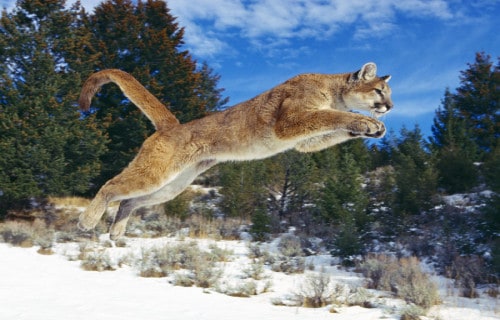
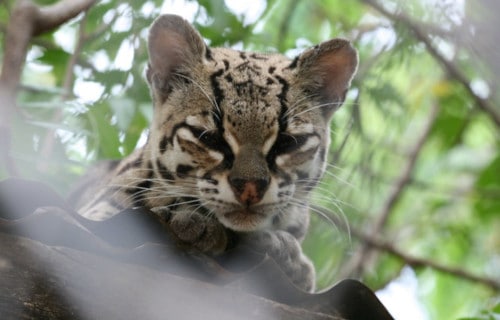
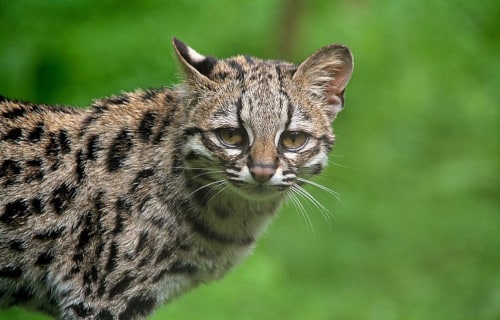

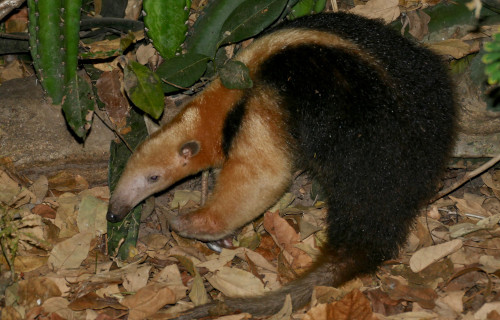
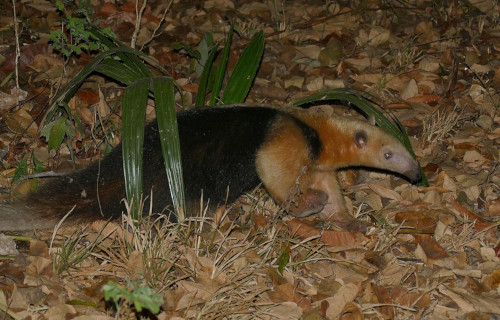
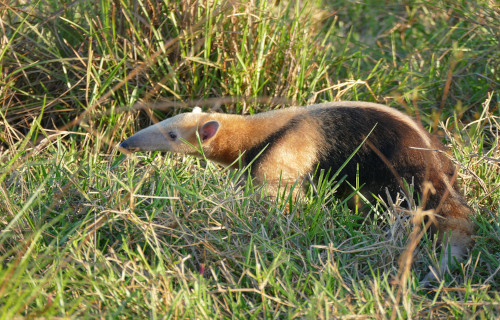

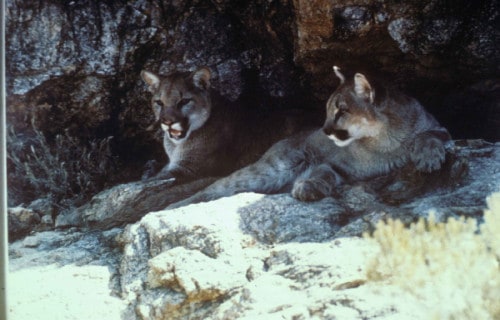
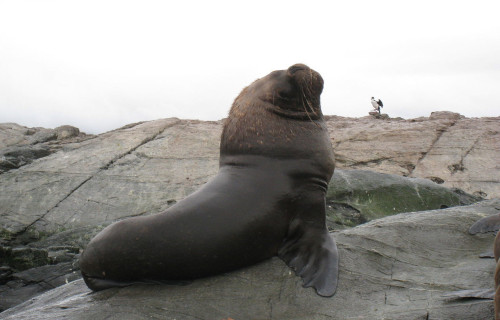


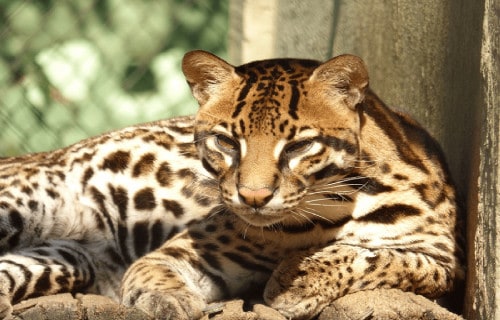
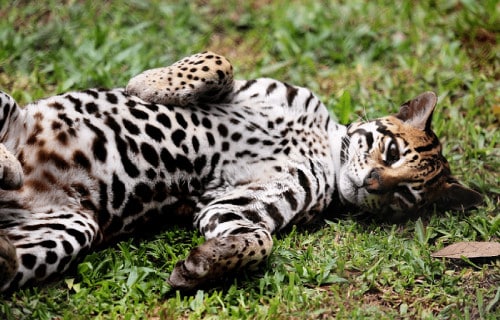
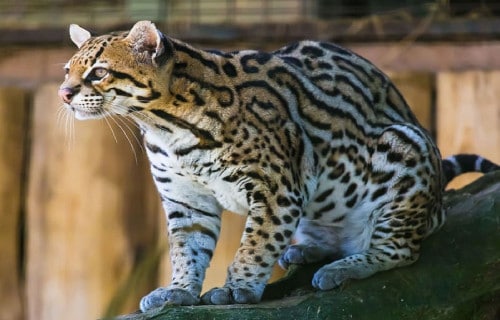









Leave a Reply